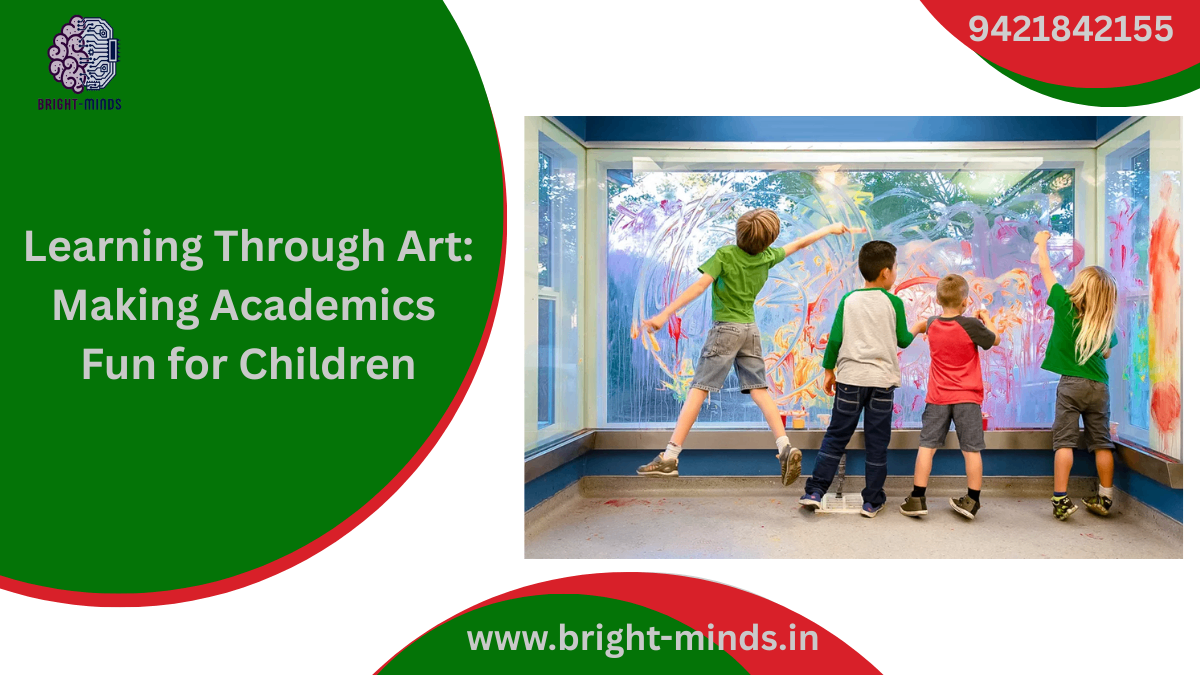Imagine a classroom where math is taught through music, science is explored through painting, and history comes alive through drama. Sound exciting? That’s the magic of learning through art a powerful, engaging approach that transforms traditional academics into enjoyable, hands-on experiences for children.
In today’s fast-paced, digitally-dominated world, keeping young minds focused and interested in learning can be a challenge. But integrating art into academics isn’t just about making things more fun — it’s a proven method that enhances retention, nurtures creativity, and fosters a lifelong love for learning.
Let’s dive into how this works, why it’s gaining momentum, and how you can get started — whether you’re a parent, teacher, or company employee exploring educational programs.
🎨 What is “Learning Through Art”?
Learning through art refers to the practice of using creative activities — such as drawing, painting, music, storytelling, dance, and drama — to teach academic subjects. It’s not a separate art class but rather an integrated approach where art is the medium for learning math, science, language, and more.
For example:
- Math concepts can be taught through geometric drawing or origami.
- Language skills can be strengthened through creative storytelling or comic-strip creation.
- Science becomes more memorable when children sketch diagrams or create models using recycled materials.
This method caters to different learning styles — visual, auditory, and kinesthetic — ensuring no child is left behind.
🌟 Why Learning Through Art Works
Here’s what makes this method so effective:
1. Boosts Engagement and Curiosity
Children naturally enjoy creative expression. When lessons are tied to fun activities, students are more willing to participate and less likely to be distracted.
2. Improves Memory and Understanding
Studies show that multi-sensory learning — engaging sight, sound, and touch — improves retention. Children are more likely to remember a science concept if they’ve drawn it or built it themselves.
3. Builds Confidence and Communication
Art-based activities often involve presentation or group collaboration, which nurtures public speaking, teamwork, and self-esteem.
4. Encourages Critical Thinking
When students create, they make decisions, solve problems, and explore new perspectives. These skills are vital not only in school but in real-life scenarios.
📈 Market Trends and Industry Insights
The EdTech and creative learning market is evolving fast. Here’s what the latest trends reveal:
- Global demand for STEAM (Science, Technology, Engineering, Art, Mathematics) education is rising. Schools are actively integrating the “A” in STEM to create holistic learning experiences.
- Parents and educators are seeking alternative teaching methods that cater to 21st-century skills like innovation, adaptability, and emotional intelligence.
- Educational companies are increasingly investing in art-integrated curriculum design and interactive learning tools.
Organizations that offer art-based academic programs are seeing improved student outcomes and higher engagement levels — making this not just an educational trend, but a smart investment in the future.
🎒 Real-World Applications
Learning through art isn’t just a classroom trick — it’s a life skill. Here are some real-world scenarios where this approach proves invaluable:
- In the workplace, creative problem-solving — often honed through art — helps teams innovate and adapt quickly.
- In entrepreneurship, storytelling and design-thinking (rooted in art) are key to branding and product development.
- In mental health, creative expression supports emotional resilience and stress relief, starting from a young age.
So when children learn academics through art, they’re not just passing exams — they’re developing life skills that extend far beyond school.
💡 Practical Tips for Parents and Educators
Want to introduce learning through art into your home or classroom? Start small with these tips:
✅ 1. Use Visual Aids
Instead of plain notes, encourage children to make mind maps, infographics, or doodle diagrams. It’s fun and highly effective.
✅ 2. Tell a Story
Turn math word problems into mini-stories or make historical events into plays. Add characters, costumes, or even puppets!
✅ 3. Encourage Project-Based Learning
Assign group tasks like building a science model or creating a class mural that combines multiple subjects.
✅ 4. Embrace Music and Movement
Use songs to teach formulas or language rules. A quick dance break or rhythmic chant can make boring topics exciting.
✅ 5. Celebrate Effort, Not Just Results
Art is subjective. Create a safe space where children are encouraged to express themselves freely, without fear of “wrong answers.”
🚀 Ready to Take the Next Step?
Whether you’re a parent trying to support your child’s learning journey, a teacher looking to refresh your methods, or an organization committed to education, learning through art offers a joyful, impactful path forward.
At [YourCompanyName], we’re passionate about turning learning into an adventure. Our creative learning programs are designed to help children build academic strength through hands-on, imaginative play.
👉 Explore our beginner-friendly courses, activity kits, and workshops — all rooted in real academic goals and crafted by education experts.
🎯 Final Thoughts
Learning through art is more than an education strategy — it’s a mindset. It invites children to explore, imagine, and understand the world in colorful new ways.
If you believe education should be fun, meaningful, and future-focused, you’re already on the right path.
It might be helpful:

